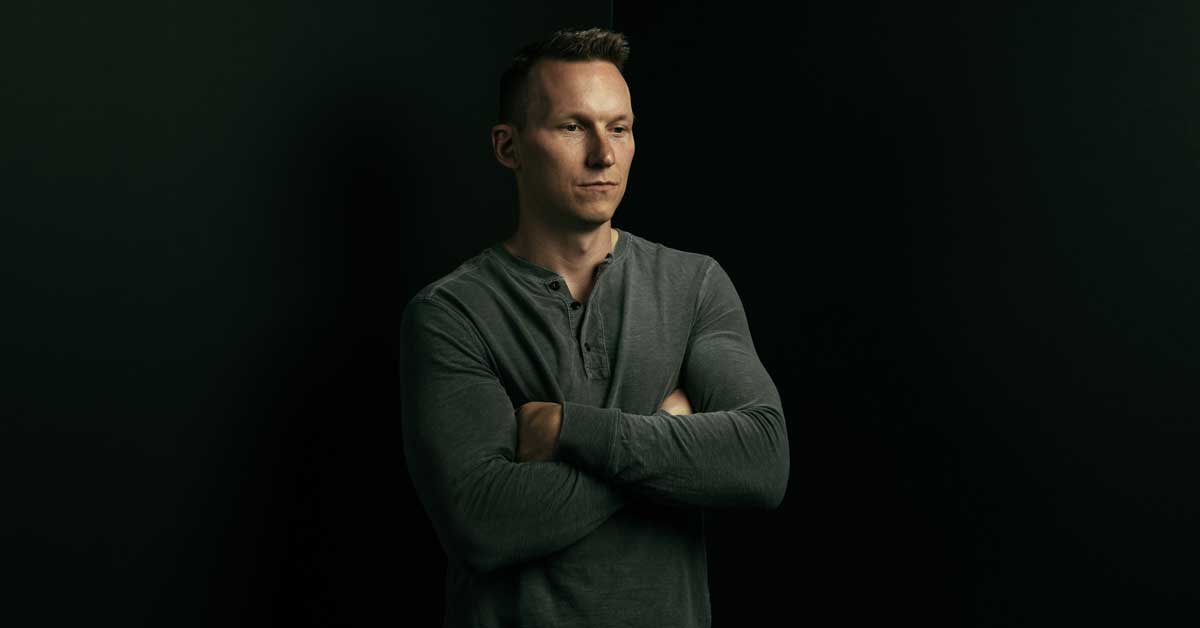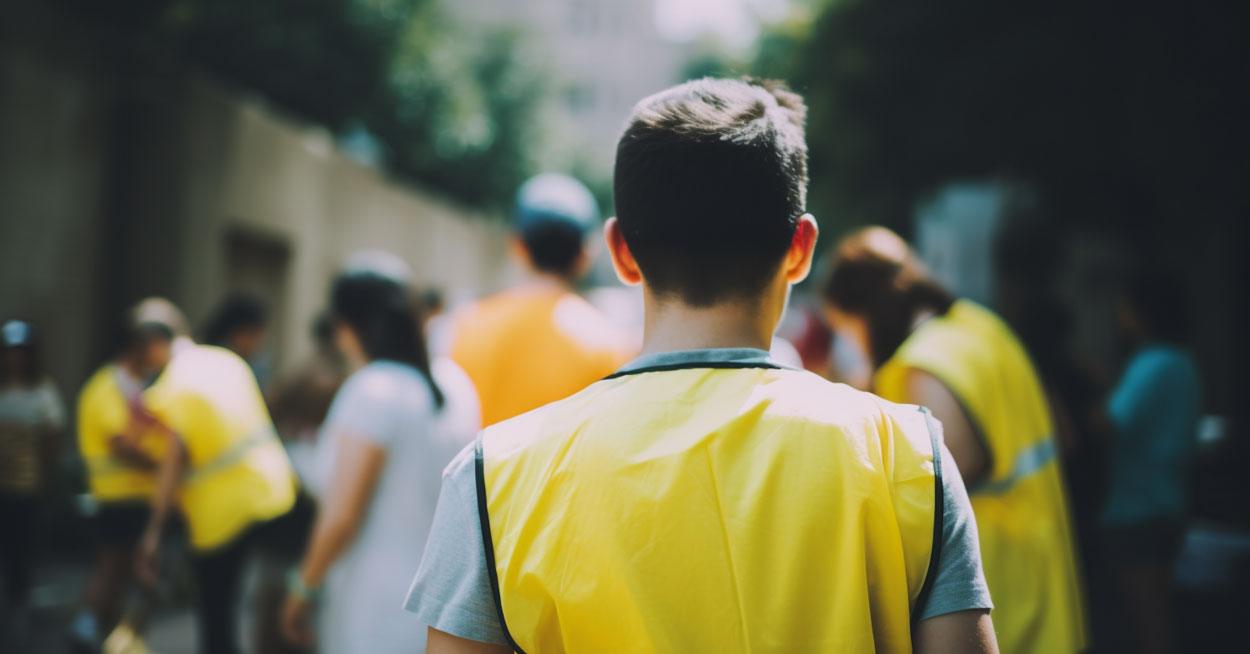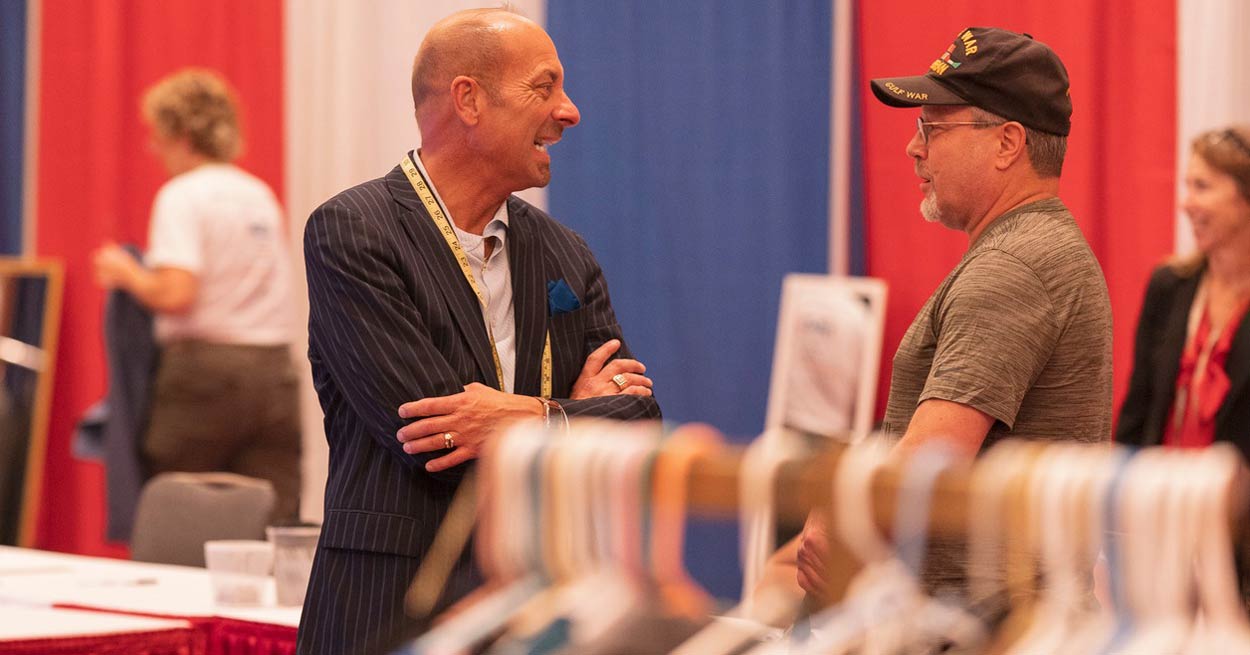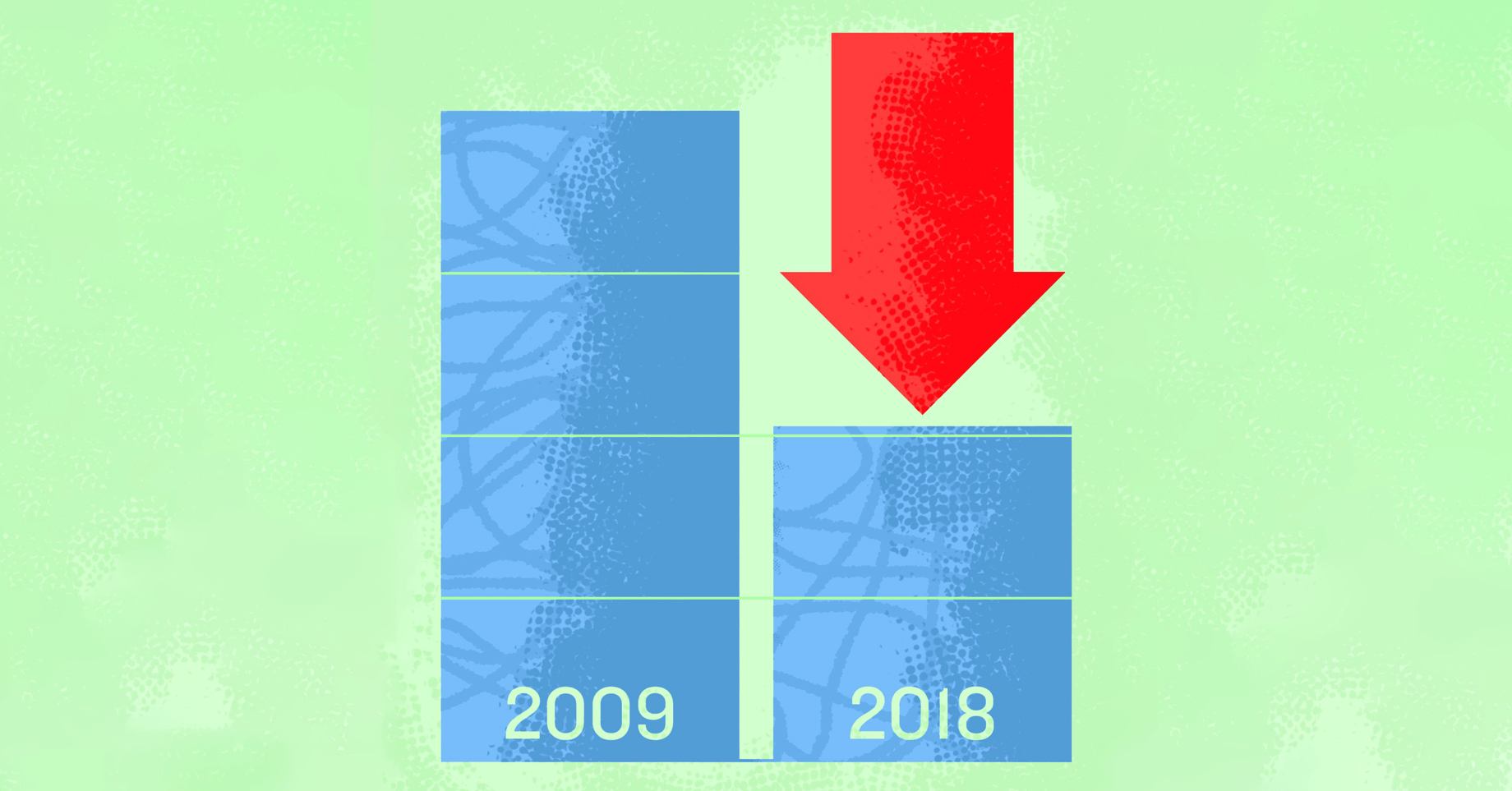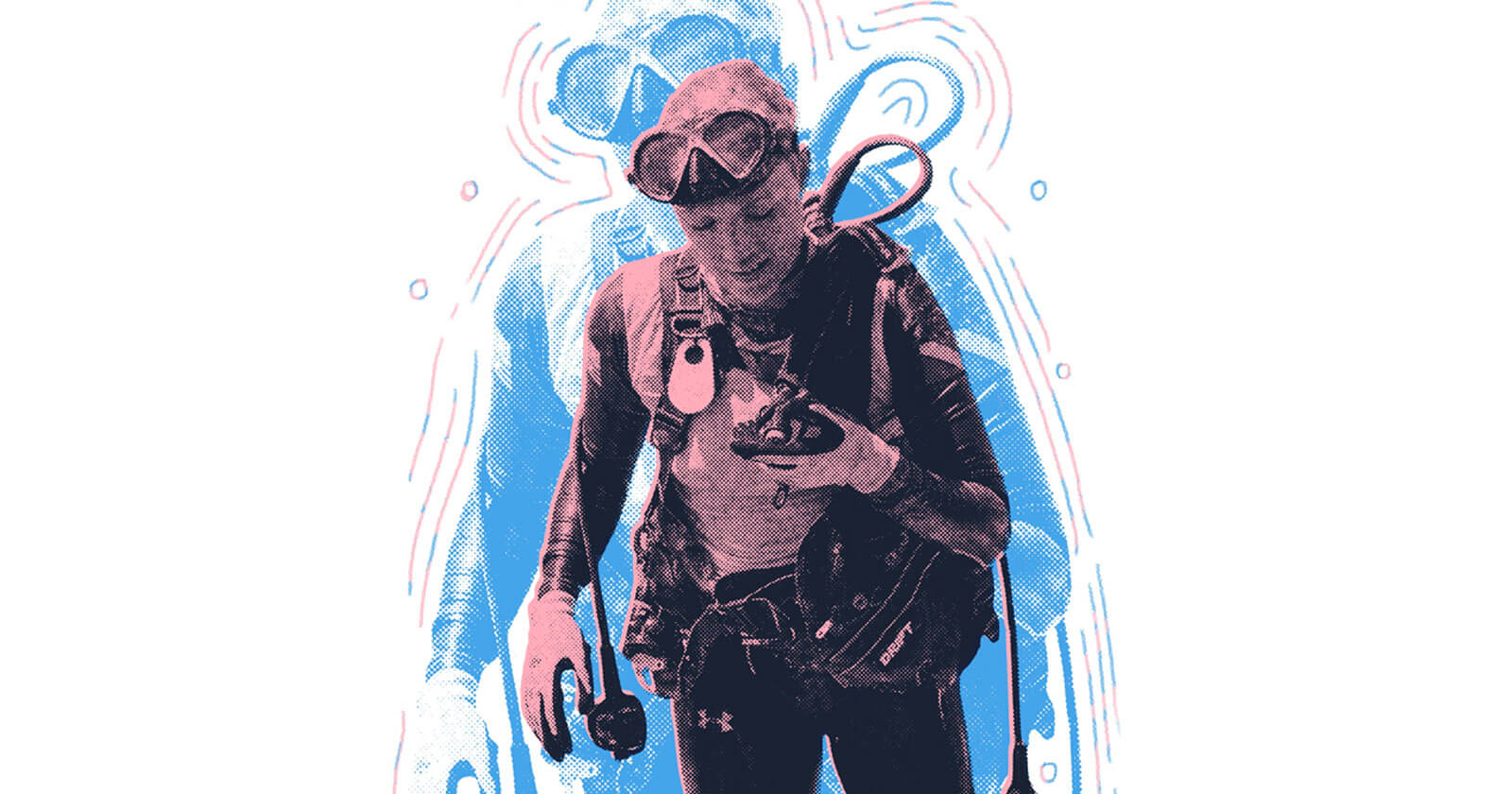According to the Department of Defense, one in five veterans of the Iraq and Afghanistan wars are diagnosed with post-traumatic stress disorder.
The social and economic costs of PTSD are immense, and the Department of Veteran Affairs reported in a 2016 study that the veteran suicide rate in the United States is 20 suicides per day. Veterans now account for 20 percent of suicides in the United States.
Richard Casper is one of those soldiers who returned home reliving the helplessness, fear, and horror associated with the trauma he experienced.
Coming from a family history of military service and moved by the events of 9/11, he joined the Marine Corps as a senior in high school.
Within his first four months in Afghanistan, his Humvee was struck by improvised explosive devices. His friend was killed by a sniper during the ambush, and Casper suffered a traumatic brain injury.
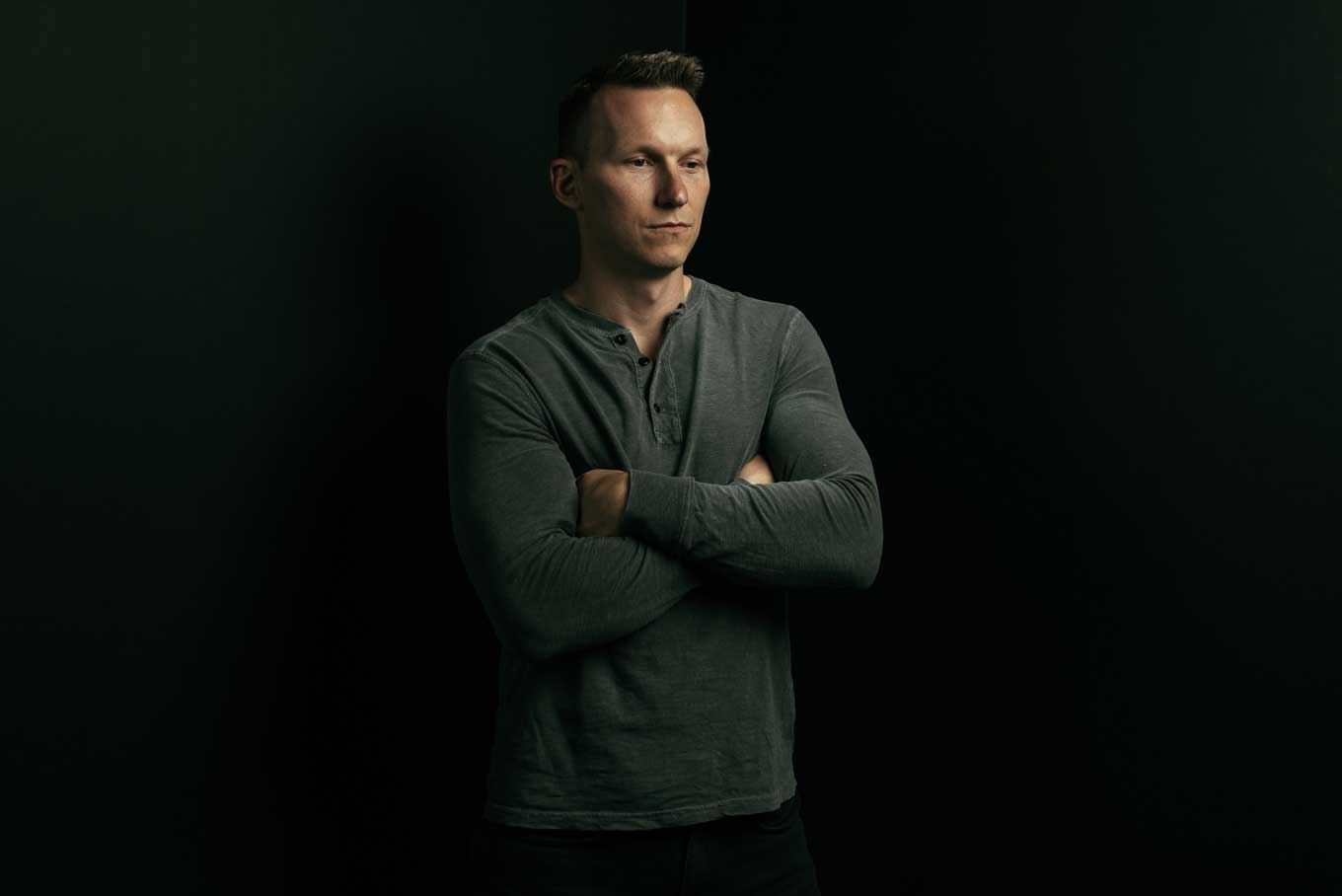
Coming home, he struggled with depression and suicidal ideation, but he found the healing power of art and music.
His art has caught the attention of TIME Magazine, the iconic School of the Art Institute of Chicago, and numerous prominent country music artists who have been paying attention and supporting the work he does.
He’s even spent time with President George W. Bush to discuss the impact music and art have had on his recovery.
Richard co-founded an organization called CreatiVets to help other veterans who are suffering.
Before we get into this story, we want to say — if you're struggling with suicide, or you need support, please reach out and get support. Check out our mental health resources for hotlines to call or text today.
Goodnewspaper editor-in-chief Branden Harvey interviewed Casper for Good Good Good’s podcast, Sounds Good with Branden Harvey.
This interview has been edited for brevity and clarity. It was originally published in 2019. You can listen to the interview in full wherever you listen to podcasts or at soundsgoodpodcast.com/creativets.
Branden Harvey: Your story is the story of somebody who encounters something difficult and chooses not to turn to apathy or cynicism but ultimately to turn toward creating a solution so that other people don’t have to struggle in the same way that you struggled.
What was it like coming home from war?
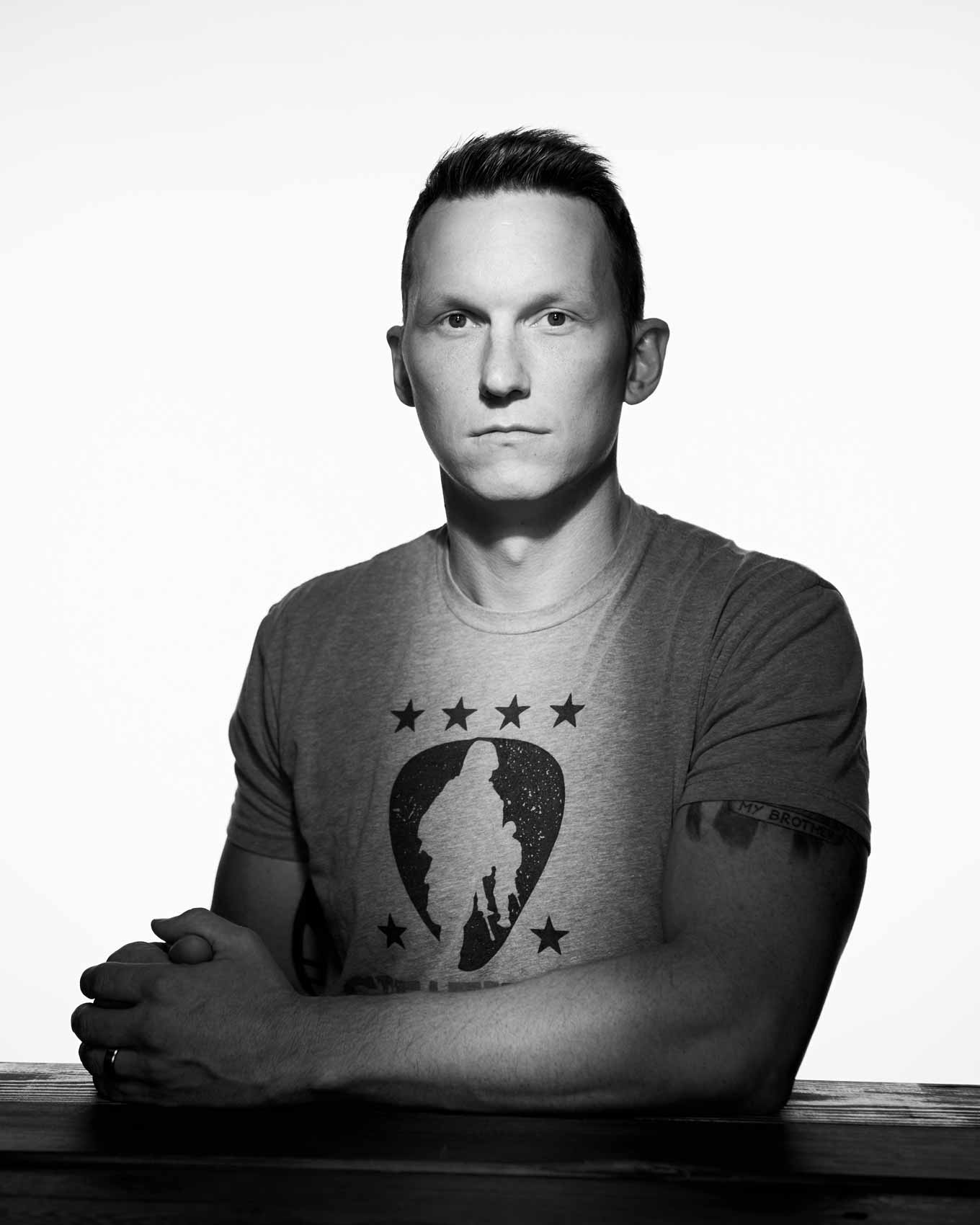
Richard Casper: The moment we touched down, I was excited about living my life. I was super pumped. They asked whether I needed any medical attention, and I said no. They didn’t check me out in Iraq like they’re supposed to.
At that point I was ready to be done. I went back home. I didn’t know I had the brain injury yet, and a month after I was out I hit a deer on my Harley while riding in Maryland.
We rode bikes with no helmets, and I was going about 50 mph, and I’m rolling and thinking how I don’t want to die. But I had this speaker on the front of my bike, a plastic piece that you put on there, and I think actually that’s what saved my life.
I survived the crash and just lived my life for six months having fun before I decided it was time to pursue my next career.
I decided to go to college and study business. So I went to Bloomington, Illinois to go to a community college for two years to get my associate's before transferring to a state college.
I enrolled in college, but college requires your brain. And that’s when I found out about my injury the hard way. I failed my first class. I was having all these problems.
I decided to go to the VA hospital and see what’s wrong. I knew there was something wrong. They diagnosed me with a traumatic brain injury and PTSD.
They told me I couldn’t learn new technical skills and my short-term memory would suffer. And at the time I was
22 years old facing my new reality, that I would have all these problems for the rest of my life. I was sitting there thinking my faith in God is the only thing that really kept me above water.
I knew I would have to find a new route. I had clearance and experience, so all I needed was a degree to be an FBI or CIA agent. But I had all these new anxieties and depression. I couldn’t function. I was so bad.
My anxieties and everything crept on me so bad that I had to do one-on-one speeches with my speech teacher in college because I couldn’t get up in front of class in front of these the 18- and 19-year-old kids. I was getting sick every single morning.
I went from prom king and class clown in high school to Marine Corps, could do anything — speak in front of everybody, a leader — to at this community college unable to get in front of class.
I thought I really couldn’t do anything. What am I going to do? I was never an artist, and I was never a songwriter, never anything like that, but I was pretty good at drawing. I decided to take an art class. Then I decided to get a degree in fine arts.
B: What was community college like?
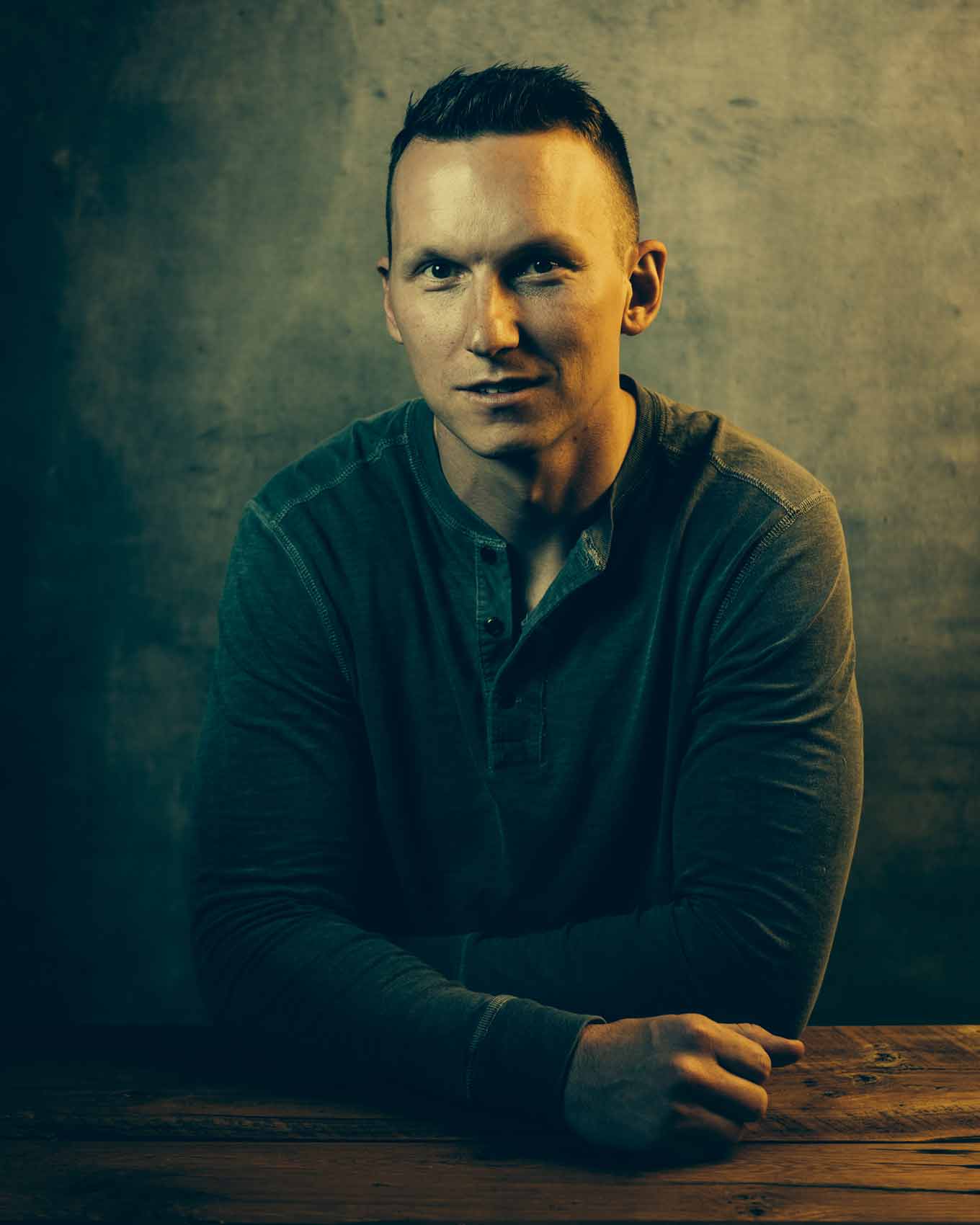
R: I had anxiety still and was very off. I tend to be open to everybody about everything, but at that time I wasn’t open about what I was going through. I didn’t know how to talk about it.
I needed to do something about Luke, who was my buddy who was shot and killed beside me. I visit his grave on his death anniversary every year in Houston, and I had this photo that my uncle took of me with my arm up on his headstone. I just love the photo.
I wanted to try to draw it. I positioned myself away from most other students and started on this mission.
I got to the point to where I had me colored in, I had his headstone colored in, and I had these roses colored in. The only thing left was the background which was all grass, so it would be green.
My teacher came up and asked if I had thought about doing the background a color that doesn’t make sense to the image but it makes sense to the way I felt inside. I took a shot with it and colored everything red in the background.
I wasn’t in the realm of doing art before so I didn’t know that you had to do critiques. You put your piece up on a wall, and other people talk about it. And so I was dreading that day, but I put my stuff up on the wall.
I pinned it up, and the students take turns giving their thoughts.
“You put red on there because you loved him.”
“You’ve got red on there because you watched him die, and you saw the blood.”
“You put red there because you’re angry that he died.”
I’m sitting here thinking, “How do they know all like this?”
These feelings made sense. It all made sense to me. I didn’t have to tell anybody how I felt. I didn’t have to verbally speak — that was my problem at the time.
My anxiety came from the anticipation of telling someone my story. It made me so anxious I would throw up. But here I had just told my story without speaking a word.
Is there something to this? I dove into this idea of conceptual art — how to hide things in these paintings, in these sculptures, and how to tell my story in a different way.
A representative from the School of the Art Institute of Chicago came down to the college. And I’m like, this school sounds cool, I’ve never heard of it.
I decided to apply. It turns out their alumnis are Georgia O’Keeffe and Walt Disney.
I brought up my portfolio of about seven pieces. They require 15 to 20. Almost all of mine were still life besides that one that I did of Luke. They’re looking at it, and they tell me I can draw well but they’re about concepts, big ideas, thinking outside the box.
And I knew I had to sell myself. I said I was limited by where I was — that I was in a community college learning from Drawing 1 and Drawing 2 instructors, that I had to do this still life stuff for classes.
But I told them art could save me. I told them I want you to know what it feels like to be blown up — not physically but mentally. I want you to know what that loss of innocence in war feels like. I have all these ideas. I just need a place to do that.
They gave me a shot that changed my life forever. So I went there and ended up getting my bachelor's from the School of the Art Institute of Chicago.
B: What was your time at the School of the Art Institute of Chicago like?
R: I used to think about war and anxiety and depression and Luke’s death constantly.
But when I created art, I could become engrossed for hours, and I wouldn’t think about war for like four hours. I didn’t think about anything.
When I went to that school I still had anxiety and depression, but when I graduated I felt almost back to my normal self. I learned there that I could use art to tell my story.
I had a job at this bar as a bouncer, where I was interacting with people. I felt so alive.
I still had some anxieties and depression, but I felt alive. At the time they had 22 suicides a day in the veteran community, and I was close to being one of those.
And I saw that nobody was trying art. There were small art therapies, but there wasn’t a big push for it.
B: And this was the beginning of your organization, CreatiVets?
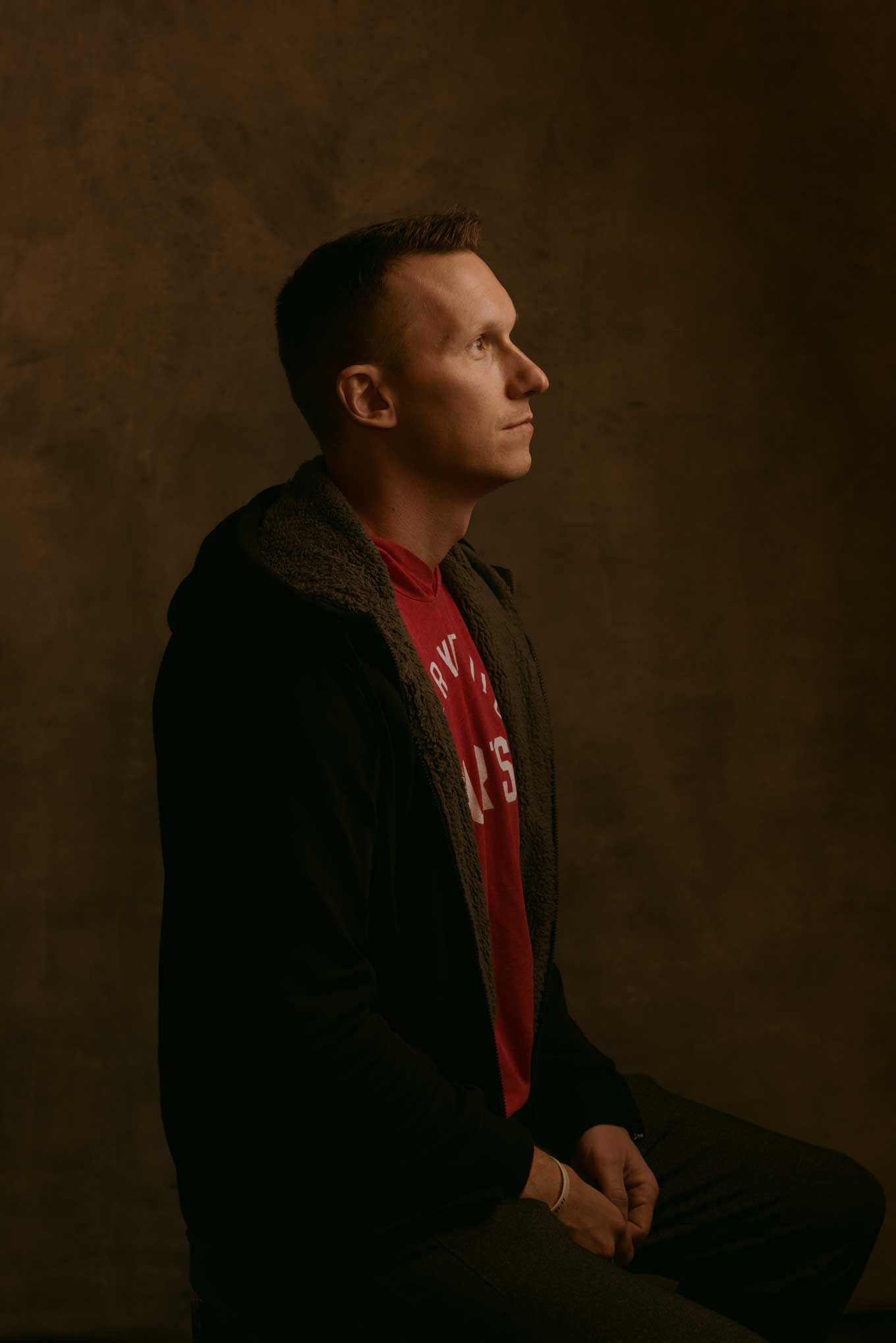
R: I felt there was a problem I had just solved. I told my buddy I didn’t have a nonprofit in mind. I didn’t have anything in mind. I just said we need to capture whatever this moment is.
I was able to learn how to play some chords on a guitar and ended up going to Nashville to meet with a songwriter to get some help writing a song about Luke.
My buddy Jesse, who was also in Iraq and lost a leg and has burns all over his body, doesn’t like telling his story either and doesn’t like people looking at him either, and I asked him if he would come to Nashville and write with this number-one songwriter.
And he said yes. He loved music. I raised a few hundred bucks to get him there, and we shared a room in a hotel by the airport for $45 a night.
And when he sat down with the writer, they finished a song about his story in three hours.
When he went home, his family was reaching out to me. “I never knew he thought like this. I finally understand him.” He was finally opening up to his family just by showing them this song.
It changed his life. He said that three-hour writing session did more for him than the six years spent at the VA hospital.
I thought other veterans could come and get a crash course in songwriting or art if I could design a program well enough.
I met a woman from Chicago who sits on the board for nonprofits, and she said she could pull some people together.
She told me to do what I wanted and she would govern it. She really believed in it. So that’s how it started.
CreatiVets, the nonprofit that Linda and I co-founded, helped about eight veterans in our first year.
We paid for their flights, food, hotel, and we set them up with songwriters to tell their story. I would take them out, and we’d listen to music and tell war stories and they would get so comfortable with me that they could tell me anything. I would go into the writing session with them the next day.
I understood in that moment that what I needed when I was almost suicidal was a battle buddy like this.
My buddy Jeremy was there for me when I would just drive out to a cornfield crying, not knowing what was going on with me.
When I called Jeremy because I didn’t know what else to do, he’d talk me off the ledge.
I knew that’s what other veterans needed. I don’t want any veteran to not have this option.
At that point I wanted to start incorporating art. I went back to the School of Art Institute of Chicago and told them they need to enroll veterans who have no art background.
I met with the vice provost and told him my dream and said I wanted to create a program to allow veterans to be in the school for just a summer semester, and I would be there to help facilitate.
But he told me I would be the teacher. He gave me freedom to run with it.
So now CreatiVets offers these three-week fully accredited programs. We pay for their flights, tuition, housing, and food. They get to live in the dorms and go to school like normal students, but they’re with other combat vets who’ve been through what they’ve been through, taught by a veteran.
Four of the veterans ended up enrolling in the school, and one is now in the grad program and took over the class I taught.
Now we have programs at Virginia Commonwealth University and the University of Southern California, and we’re going to advance into film and other arts aside from drawing and songwriting.
Art and music and storytelling legitimately save lives. And in the veteran community we just don’t know that because we’re so used to not telling our story and carrying our own pack and not needing help from anybody else that we never get retrained how to let that go and be vulnerable.
B: How closely have the experiences of other veterans mirrored your own experience? I imagine it’s harder for some people to really get into this and easier for others. What’s that like?
R: There are no rules. I’m not a clinical therapist. We’re not doing art therapy or music therapy, but I understand that art and music can be therapy to somebody.
I do one-on-ones with every veteran where I say, “Here’s what happened to me. What happened to you?”
I’m not trying to make them artists. I’m trying to teach them how to transition from war brain to artist brain.
B: You’ve been working with President George W. Bush. Can you tell me about that?
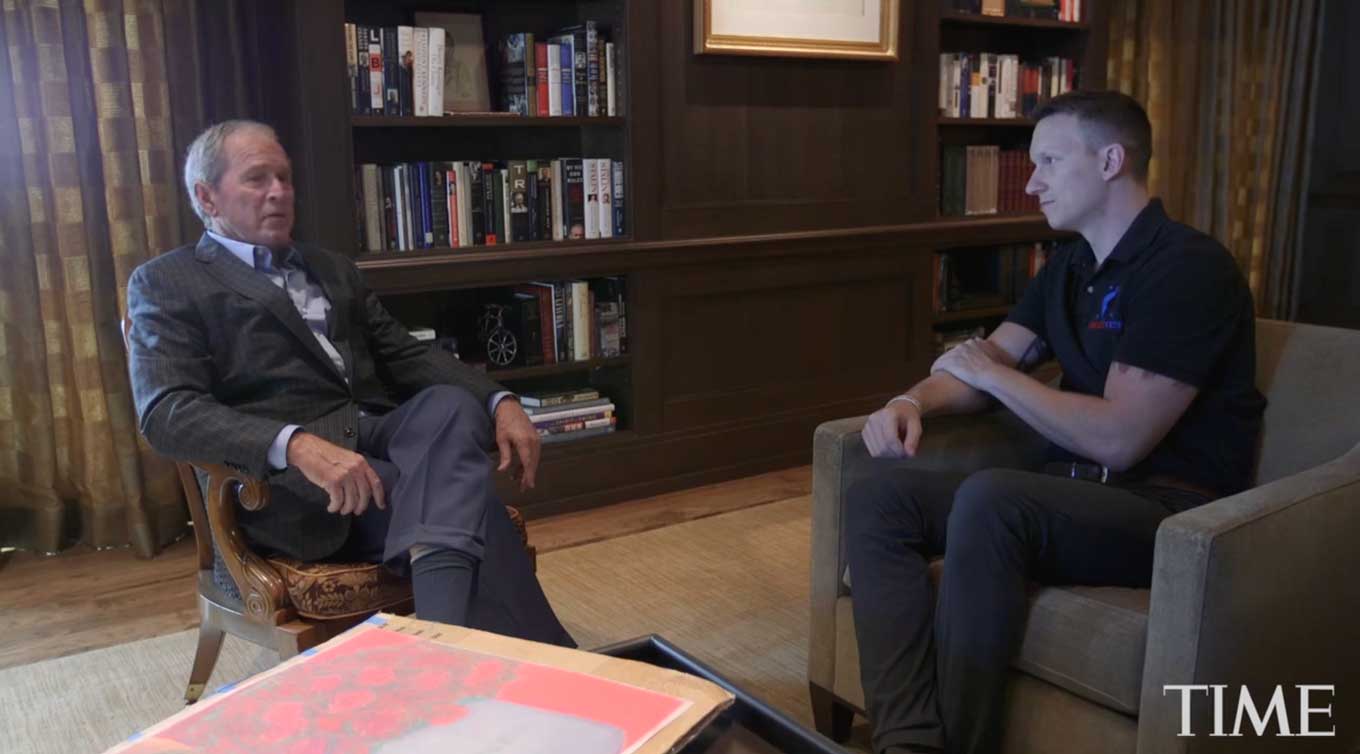
R: He started a program called the Veteran Leadership Program. He selected 33 leaders — doesn’t matter if they’re civilians or veterans as long as they’re doing something in the veterans space.
You could apply for this program, and I got in. It’s like a cohort with the president’s resources and all his people.
We have the CEO of Easterseals, people from Prudential, from CBS, from Wounded Warrior Project. It’s just been a great experience. It’s one of the coolest things I’ve ever been a part of.
B: And President Bush has been doing all this artwork, too. He started painting post-presidency. What do you see that to mean?
R: I thought from the beginning that he was processing things. A conceptual art piece, like a subconscious thing. I knew he was painting, and I thought that was cool.
I went from protecting George Bush at Camp David to going to war, being injured, learning how to use art to heal, and now helping other veterans.
And now he’s using art to paint veterans. Some of the veterans I’ve helped actually were painted by him.
Time Magazine made a documentary about me, and they reached out to President Bush to see if he would meet with me.
My wife and I got to sit for 20 minutes and talk to George W. Bush about art. I told him I love what he’s doing.
B: You’ve been through a lot of hell. But you’ve also done so much good. Would you turn back the clock and do things differently if you could?
R: There’s a famous quote by an admiral that says “War makes a bad man worse. And a good man great.”
If I was never injured I would still be a good person, but I wouldn’t be doing the stuff I’m doing now, and I would do it again 100 percent every time.
